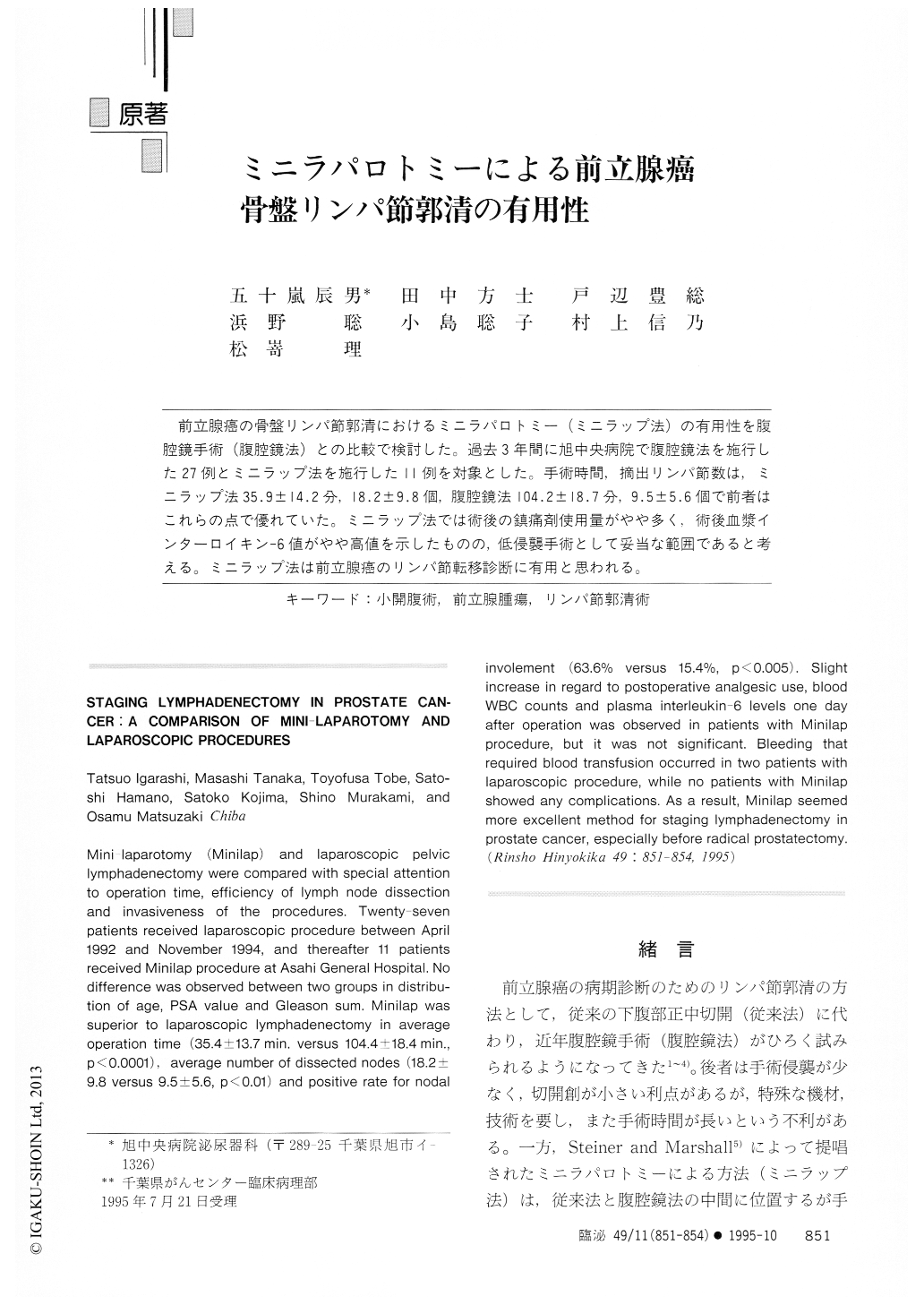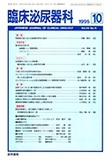Japanese
English
- 有料閲覧
- Abstract 文献概要
- 1ページ目 Look Inside
前立腺癌の骨盤リンパ節郭清におけるミニラパロトミー(ミニラップ法)の有用性を腹腔鏡手術(腹腔鏡法)との比較で検討した。過去3年間に旭中央病院で腹腔鏡法を施行した27例とミニラップ法を施行した11例を対象とした。手術時間,摘出リンパ節数は,ミニラップ法35.9±14.2分,18.2±9.8個,腹腔鏡法104.2±18.7分,9.5±5.6個で前者はこれらの点で優れていた。ミニラップ法では術後の鎮痛剤使用量がやや多く,術後血漿インターロイキン−6値がやや高値を示したものの,低侵襲手術として妥当な範囲であると考える。ミニラップ法は前立腺癌のリンパ節転移診断に有用と思われる。
Mini-laparotomy (Minilap) and laparoscopic pelvic lymphadenectomy were compared with special attention to operation time, efficiency of lymph node dissection and invasiveness of the procedures. Twenty-seven patients received laparoscopic procedure between April 1992 and November 1994, and thereafter 11 patients received Minilap procedure at Asahi General Hospital. No difference was observed between two groups in distribu-tion of age, PSA value and Gleason sum. Minilap was superior to laparoscopic lymphadenectomy in average operation time (35.4±13.7min. versus 104.4±18.4min., p<0.0001), average number of dissected nodes (18.2± 9.8 versus 9.5±5.6, p<0.01) and positive rate for nodalinvolement (63.6% versus 15.4%, p<0.005). Slight increase in regard to postoperative analgesic use, blood WBC counts and plasma interleukin-6 levels one day after operation was observed in patients with Minilap procedure, but it was not significant. Bleeding that required blood transfusion occurred in two patients with laparoscopic procedure, while no patients with Minilap showed any complications. As a result, Minilap seemed more excellent method for staging lymphadenectomy in prostate cancer, especially before radical prostatectomy.

Copyright © 1995, Igaku-Shoin Ltd. All rights reserved.


